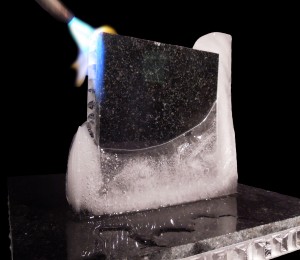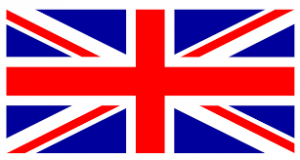Red Sandstone Exterior Cladding NASA Johnson Space Center Building 21, Houston, TX Reminiscent of an Southwestern Desert skyline, Red Sandstone can be found all over the world in desert and dry areas. Colored by Iron oxide, Red Sandstone has a neutral warm red color. Red sandstone makes for great exterior cladding due to […]
StonePly UK
Fire Performance of StonePly Stone Cladding Panels
StonePly stone cladding panels are an inherently safe material and highly resistant to fire.
If you are considering stone cladding for your building project, the ability of the cladding panels to resist fire is a key factor. While stone is non combustible, ordinary 3 cm thick slab stone performs poorly when exposed to fire. The heat can cause slabs to crack and lead to anchor failure. Thin stone on aluminum honeycomb with a combustible fiberglass backing also performs poorly, since the combustible backing can lead to cavity fires. StonePly has a thin stone face on aluminum honeycomb with a non combustible aluminum backing that performs well. The stone face will not burn. The back panel is aluminum and is also non combustible. In addition to not burning, the continuous bond between the aluminum honeycomb and the stone prevents the stone from shattering and creating large falling debris when exposed to a fire.
UK Fire Regulations and Stone Cladding
In the UK, the Building Regulations Document B defines the minimum fire safety requirements of building elements or components. Since StonePly is made up primarily of stone and aluminum, it easily complies with the fire regulations.
Following are some points to consider when specifying stone wall cladding systems:
- Cladding materials with a class 0 flame spread should be specified. StonePly stone cladding panels for the building envelope meet the requirements of class 0 (Zero flame spread).
- Cladding panels and systems that achieve a grade AA should be used for roofing. StonePly panels achieve grade AA.
- Avoid products that do not have a class 0 / non combustible back panel. If fire can find its way into the void space behind the cladding, a combustible backing to a cladding can allow the fire to quickly spread undetected inside the airspace cavity behind the panels. StonePly panels have a non combustible aluminum back.
British Standard Tests for Fire Performance: The BS 476 series
BS 476 Part 3. Surface spread of flame and fire penetration
An external fire exposure test for roofs. The performance requirements for external roof coverings is specified in approved Document B. It varies by location of the building in relation to how close the building is to its relevant boundary. Roof products which meet the requirements of European Class AA can be used without restriction to closeness to the boundary.
Similar to the burning brand test, the BS 476 part 3, simulates the effect of burning material falling on to a roof from an adjacent building. StonePly stone panels meet the requirements of AA (the best rating). The first A designates the resistance to flame spread (no flame spread) and the second A (the best rating) signifies the panels resistance to penetration or burn through by fire (no burn through).
BS 476 Part 4. Non Combustibility
Both the stone face of the StonePly panel and the aluminum back are rated as non combustible.
BS 476 Part 6. Fire propagation
The test measures the rate of heat release during combustion. Being non-combustible, StonePly successfully passes the test.
BS 476 Part 7. Surface spread of flame
A test of the spread of flame across the surface of a material. StonePly has a 0 flame spread and achieves a class 1 (the best rating) on both the stone face and the aluminum back of the panel.
BS 476 part 11 Test for Combustibility
Tests for combustibility and measure the heat emission from the product in a 750 C furnace. Both the inner and outer face of StonePly are classified as non combustible.
For more information
Contact us with any questions. We are here to help.


No comments yet.